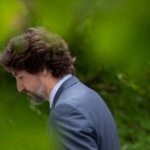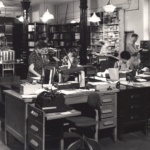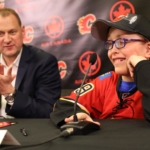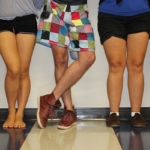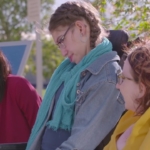Met + Parsons Museum Accessibility Collaboration Workshop
Web accessibility for museums. The Metropolitan Museum of Art + The New School for Design at Parsons, New York.
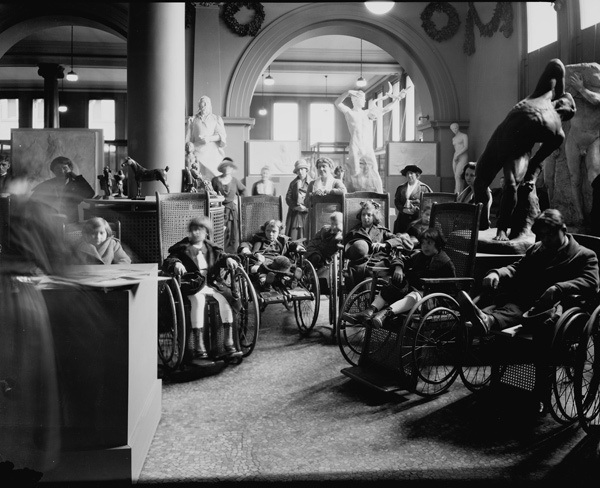
A group of students with disabilities visiting the Museum’s Cast Collection galleries, Wing B, Gallery 40. Photographed November 23, 1922 © The Metropolitan Museum of Art
Don Undeen, Former Senior Manager of MediaLab, Digital Department; and Rebecca McGinnis, Senior Museum Educator, Access and Community Programs, The Met December 8, 2014
Digital Underground finishes its Met + Parsons Museum Accessibility Workshop series by taking a look at a project that addresses the need for clear, practical guidelines for creating accessible websites. In the end, the participants in this project produced two documents that can serve as guidelines for coding accessible websites and developing verbal descriptions of art objects.
We caught up with the team to ask them some questions about their goals in this workshop, and what they discovered about the museum experience while engaged in the workshop.
| The Participants | |
| The Students | Primary Advisors |
| Ye Han Kamilla Kielbowska Meagan Durlak |
Don Katz Dana Simon |
 |
|
| Digital Underground: Describe your project to someone who’s never seen it before. |
Met + Parsons: Our project focused on translating the overall experience that exists within the museum walls to that of the online world, particularly for those that are visually impaired or rely on a screen reader. In assembling a series of best practices for the online experience, we hope to be able to create a launching pad for other cultural institutions to start the process of building more accessible websites from the earliest stages of project development.
The two best practices we produced are designed for museum and creative professionals alike. The first one, “Creating Accessible Code,” explores how web developers can start to make small changes to their work, changes that would actually make the usability experience that much more enjoyable for someone who relies on a screen reader. The second document, “Writing Visual Descriptions,” examines how a museum professional can author written descriptions of objects so that those who are visually impaired or rely on screen readers can still experience the artwork in an exciting, comprehensive way.
| How did you come to the idea for your project? What were your inspirations? |
We were inspired by the concept of retrofitting, or rather, by how this technique proves to be a truly unacceptable way of designing for accessibility. We thought it was interesting how web designers today are traditionally retrofitting a website to make it more “accessible” without really considering what the usability experience is like for the end user. Today, most people who rely on screen readers have come to terms with a poor usability experience, but we wanted to improve upon this.
| Of all the advisors and industry partners, with whom did you work the most closely and why? |
We worked closest with Don Katz since he was the most candid and vocal about what he would and wouldn’t like to experience on a website. He was very willing to show us how he worked with different types of technology and he user-tested just about everything we designed, which was incredibly helpful. Dana Simon also provided a lot of great feedback and insight.

Project advisor Dana Simon reviewing the team’s work
| What were some surprising discoveries you made along the way, or some assumptions you had made that were challenged? Were there aspects of your design that didn’t work the way you expected? Were there parts of your plan you had to jettison because of time or practicality? |
It was surprising how everyone said that Apple’s iOS had the best accessibility functionality of any phone, since it seemed incredibly confusing and poorly designed to us. This inspired our group to think about the ways today’s technology could achieve “true” accessibility.
An initial assumption that inspired the project was thinking that the existing tools for web accessibility were incredibly thorough and actually improved the online experience! When we dug a little deeper and started to develop some of our concepts, we realized that this wasn’t actually the case and we immediately began to think about moving some of these features into the earlier stages of the project.
If we had had more time it would have been nice to build another prototype that could be used by a more traditional design agency, so we could test how some of these best practices could be applied to the daily workflow of a non-museum platform.

Rebecca McGinnis provides feedback on a version of a Collection Online object page optimized for low-vision visitors
| If you had another semester to continue working on the project, what would you do? |
We would try to populate the website with more content, implement more user testing as a way to further polish our wireframes and designs, and try to streamline our work into the Met’s website a bit more. It would be great to find even more ways to make it easier to implement some of these concepts
| What questions do you still have about your work? |
We still want to explore exactly how these best practices can be designed to be better deployed into the traditional website development process—as well as figuring out how this type of work could be translated into a full-time position at the Met!
| When your final project was presented to a group of people who were seeing it for the first time, what was some notable feedback you received? |
We received a lot of very positive feedback about the written descriptions, and a wide variety of user types saw value in being able to use this functionality.
| How has this course affected how you think about accessibility, as well as the needs and expectations of people with disabilities? |
We all feel that this course immensely affected the way we think about accessibility—particularly how shocking it was that the outdated process of retrofitting was still a common practice. It was also incredibly astounding to watch Don [Undeen] use his iPhone and realize that a lot of the simple functionalities we take for granted have a whole new meaning for someone who is visually impaired.
| How has this course affected how you think about museums? |
When you visit a museum, you don’t necessarily think about what happens behind the scenes—the amount of work that goes into curating and organizing the museum experience from top to bottom—so that was fantastic to see from an insider’s perspective.
| What else would you like to tell us about your experience in the class? |
We all loved this class. It was great to be asked to challenge some of the work that we do on a daily basis (web development) and think about the ways in which we can transform our own practice into something that aids a wide spectrum of end users
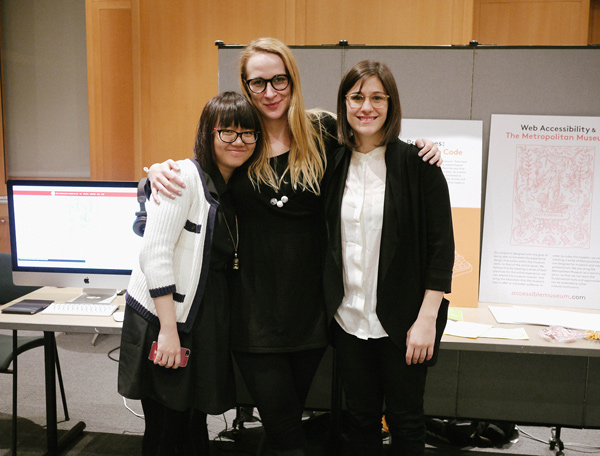
From left to right: Ye, Kamilla, and Meagan
| Related Links |
Writing Visual Descriptions: Best Practices PDF
Creating Accessible Code: Best Practices for Web Accessibility PDF
Digital Underground Posts related to the Met + Parsons Museum Accessibility Collaboration Workshop
 Source The Met
Source The Met
| Museum Accessibility. Veronica Black. Uploaded on Vimeo December 11, 2013 |
These are some of the questions we asked ourselves when embarking on the Met + Parsons Museum Accessibility Collaboration Workshop.
What expectations do people with disabilities have when they visit museums? How are museums adapting new technologies to better serve our visitors, whatever their abilities and interests? How can the Met take a leadership role in introducing standards for inclusivity to the next generation of museum technologists?
| Access at the Met |
The Met has a long-standing history of making art accessible to people with disabilities, one that spans over one hundred years, and even today, the Museum’s Access programs have received many accolades—most recently, the American Foundation for the Blind’s 2014 Access Award.
Rebecca McGinnis works across the Museum on accommodations, services, and other access issues to ensure a rewarding visitor experience for people with disabilities. We are keen to enhance the museum experience for audiences with and without disabilities through technologies that facilitate communication and engagement with art and other visitors.
| Media Lab |
The Met’s Media Lab is a small team, managed by Don Undeen, whose job is to explore the impact that new technologies can have on the museum experience.
The Media Lab does this by partnering with interns, volunteers, and collegiate programs to develop experimental prototypes and demos in collaboration with Museum staff and visitors.
| The Parsons MFA in Design and Technology Program |
The MFA in Design and Technology (MFA DT) at Parsons The New School for Design provides students with a lively and dynamic environment for using design research, process, applied theory, and writing to address the challenges of the expanding influence of design within society, as well as the growing role of technology within design.
Students push their experimentation beyond the visual: Design is seen as a mechanism for developing strategies, knowledge organization, business structures, and social consciousness
| How the Collaboration Began |
The idea for the class originated in a series of conversations in 2012 between Don, Rebecca, and Katherine Moriwaki, the director of MFA DT at Parsons. Media Lab and Access programs were interested in exploring technology that could improve the museum experience for visitors with disabilities. Simultaneously, Don brainstormed with Katherine to determine ways that the Met could further partner with Parsons.
With its large, diverse audience, encyclopedic collection, and massive, labyrinthine floor plan, the Met provides ample opportunities for students who want to tackle complex accessibility challenges. Conversely, the intelligence, creativity, and enthusiasm of Parsons students is a resource the Media Lab was eager to tap. Because accessibility is a complex topic, Katherine, Don, and Rebecca agreed that the best type of collaboration would involve an entire class diving into the issues over the course of a full semester, with extensive cooperation from a variety of stakeholders in the field. Thus, the Met + Parson Access Collaboration Workshop was born!
| The Participants |
The magic ingredient in this collaboration was the enthusiastic participation of a group of advisors and access-industry professionals, who met with the students throughout the semester. The advisors were museum enthusiasts with disabilities who agreed to talk about their experience and give real-world feedback on the projects. The access-industry professionals contributed their collective decades of knowledge in the field, so students didn’t need to re-invent the wheel, but, rather, build on pre-existing concepts.
 Source The Met July 21, 2014
Source The Met July 21, 2014
Also see
No art lover left behind: how galleries are finally welcoming disabled people The Guardian
Welcoming Art Lovers With Disabilities The New York Times
Media Lab Intern Spotlight: Yuliya Parshina-Kottas’s Accessible Wayfinding The Met
A museum for everyone The New School
Accessible Museum: Can Thoughtful Design Help Improve The Experience Of Viewing Art For Visitors With Disabilities? Architizer Journal
The Doctor Is In: Michael Graves’ Personal Healthcare Design Crusade Architizer Journal
Integrating the disability perspective: assistive technology, design, hackathons & makeathons Disability Visibility Project

